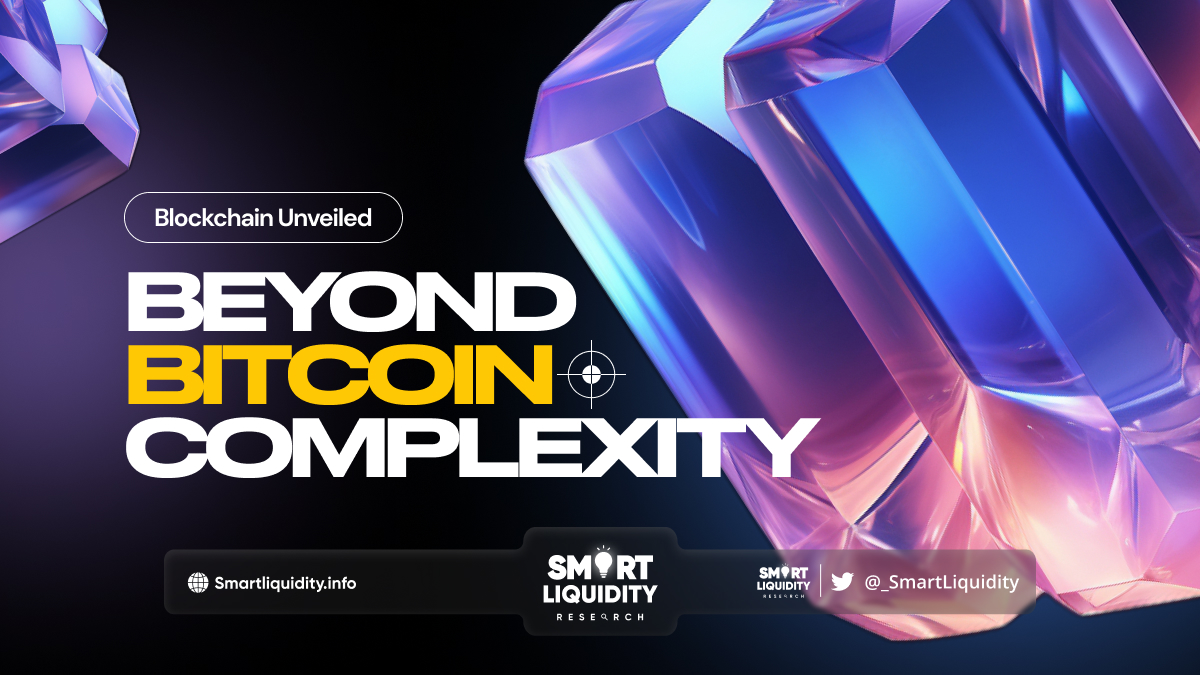Beyond Bitcoin: Delving Into the Complex Layers of Blockchain Innovation


Blockchain technology, birthed with Bitcoin, has evolved into a multifaceted innovation ecosystem. Beyond the hype of cryptocurrencies, its true potential lies in the transformative power it holds across industries, revolutionizing concepts of trust, security, and decentralization.
Decoding the Decentralization Puzzle: How Blockchain Disrupts Traditional Trust Models
At its core, blockchain’s disruptive force lies in decentralization. By distributing data across a network of nodes rather than a central authority, it upends traditional trust models. This shift fundamentally changes how we authenticate, transact, and interact in a digital landscape.
Traditional systems are susceptible to single points of failure, vulnerable to manipulation, and require intermediaries for validation. Blockchain eliminates these vulnerabilities by using consensus mechanisms, cryptographic principles, and distributed ledgers. This not only secures data but also democratizes access, empowering individuals to control their digital footprint.
Moreover, the rise of smart contracts, self-executing agreements embedded in code, automates processes, reducing reliance on intermediaries. This transformative potential extends beyond financial transactions to industries like healthcare, supply chain, and voting systems, ensuring transparency, integrity, and trust in previously centralized systems.
| Layer | Description | Impact |
| Blockchain Network Layer | Decentralized, distributed ledger technology for recording transactions | Secure, transparent, and immutable record keeping |
| Smart Contract Layer | Self-executing contracts based on predefined conditions | Automates transactions, reduces friction, and eliminates intermediaries |
| Decentralized Finance (DeFi) Layer | Open-source financial applications built on blockchains | Provides access to financial services without central authorities |
| Non-Fungible Tokens (NFTs) Layer | Digital certificates of ownership for unique assets | Enables new forms of digital ownership and asset creation |
| Decentralized Applications (dApps) Layer | Applications built on top of blockchains | Provides a wide range of services and functionalities without central control |
| Interoperability Layer | Bridges and protocols allowing communication between different blockchains | Enables cross-chain transactions and unlocks new opportunities for innovation |
| Scalability Layer | Solutions to address the limitations of transaction speed and throughput on blockchains | Enables growth and adoption of blockchain applications |
| Governance Layer | Mechanisms for decentralized decision-making within blockchain ecosystems | Ensures the ongoing development and sustainability of blockchain networks |
| Privacy Layer | Techniques for protecting user privacy on blockchains | Enables confidential transactions and protects sensitive information |
| Security Layer | Measures to protect blockchain networks from hacking and other vulnerabilities | Ensures the integrity and trust of blockchain systems |
Blockchain Beyond Finance: Exploring the Explosive Growth of Decentralized Applications
The expansion of blockchain reaches far beyond currency. Decentralized applications (dApps) are at the forefront of this revolution, leveraging blockchain’s decentralized nature to create diverse solutions. These apps run on a decentralized network, eliminating single points of failure and offering transparent, tamper-resistant functionalities.
From decentralized finance (DeFi) platforms offering lending, borrowing, and yield farming to non-fungible tokens (NFTs) revolutionizing ownership rights, the scope of dApps is expansive. Furthermore, they enhance privacy, security, and user control, fostering a new era of user-centric digital experiences.
As adoption grows, scalability and usability remain critical challenges. Innovations in layer 2 solutions and interoperability protocols aim to address these limitations, opening doors for mainstream adoption and unleashing the full potential of dApps in reshaping various industries.
Security, Scalability, and Sustainability: The Big Three Challenges in Blockchain’s Evolution
Despite its promises, blockchain faces hurdles in security, scalability, and sustainability. Security concerns center around potential vulnerabilities in smart contracts, consensus algorithms, and network attacks. Scalability remains a bottleneck, limiting transaction throughput and network speed, hindering mass adoption.
Moreover, the energy-intensive nature of some consensus mechanisms raises sustainability concerns. However, ongoing research explores eco-friendly alternatives like Proof of Stake (PoS) to mitigate environmental impact without compromising security.
Collaborative efforts within the community focus on resolving these challenges. Layer 1 and layer 2 scaling solutions, advancements in cryptographic techniques, and consensus algorithm upgrades aim to bolster security, enhance scalability, and promote sustainability in blockchain networks.
Regulation in a Decentralized World: Navigating the Legal and Policy Challenges of Blockchain
As blockchain disrupts centralized systems, regulatory frameworks struggle to keep pace. The decentralized nature poses challenges in enforcing traditional laws and raises concerns regarding legality, taxation, and jurisdictional issues.
However, governments and regulatory bodies worldwide are making strides in understanding and regulating blockchain technology. Initiatives range from defining digital asset classifications to establishing guidelines for blockchain-based projects, fostering a conducive environment for innovation while safeguarding consumer interests.
Collaboration between regulators, industry stakeholders, and technologists is crucial to strike a balance between innovation and compliance. Clear, adaptable regulations can foster trust and attract institutional investments, accelerating blockchain’s integration into mainstream industries.
Investing in the Future: Understanding the Landscape of Blockchain Ventures and Opportunities
Blockchain presents a myriad of investment opportunities beyond cryptocurrencies. Venture capital funding pours into blockchain startups, supporting innovations across sectors like healthcare, supply chain, and identity management.
The diversity of investment avenues includes tokens, equity in blockchain-based companies, and infrastructure projects. Understanding the underlying technology, assessing market trends, and conducting due diligence are key to navigating this complex landscape.
Moreover, the emergence of security tokens, representing ownership in real-world assets, and decentralized autonomous organizations (DAOs) that operate without centralized control, offer novel investment models with potential for significant returns.
The Final Thoughts
Blockchain’s evolution far surpasses Bitcoin’s inception. Its disruptive potential redefines trust, empowers decentralized applications, and challenges conventional systems. Overcoming challenges in security, scalability, and regulation is pivotal in harnessing its full potential. Understanding the diverse investment opportunities amidst regulatory developments is key to embracing blockchain’s transformative power across industries. As this technology continues to mature, its impact on society will only deepen, ushering in an era of unparalleled innovation and empowerment.




